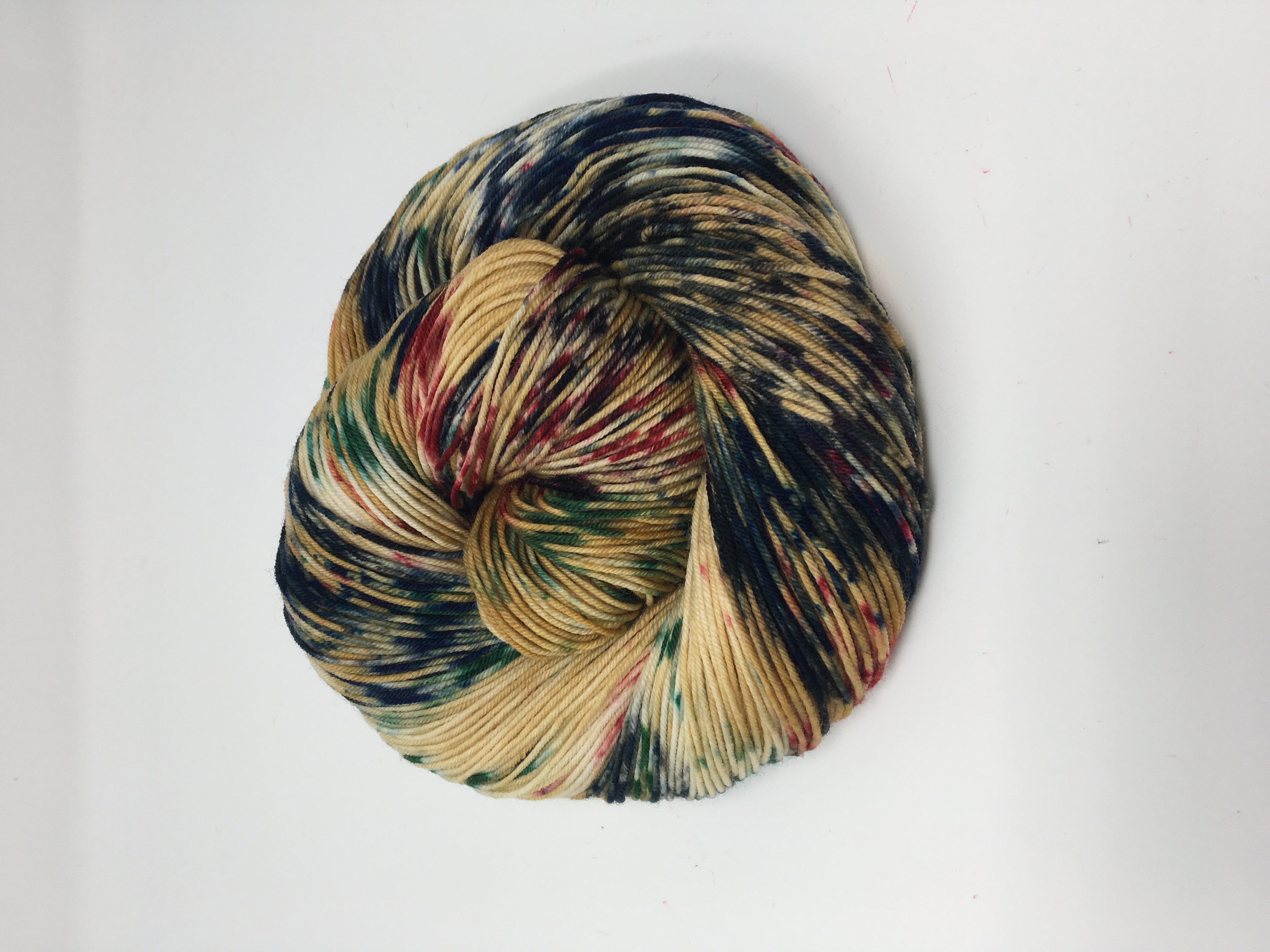Each month this year, we are exploring a different artistic avenue, and for March, we’re heading into the movie theater to spend a bit of time with A va DuVernay. She’s an American director, producer, and screenwriter, best known for 2018’s A Wrinkle in Time. Like many HerStory recipients, Ava DuVernay has a big stack of “firsts” to her name: the first black woman to win the directing award at the Sundance Film Festival (for Middle of Nowhere); the first black female director to have a film nominated for a Golden Globe (for Selma); the first black female director to have a film nominated for an Oscar (again, for Selma); the first black female director to be nominated for an Academy Award for a feature (13th); and the first black female director to direct a live-action film with a budget of over $100 million (for A Wrinkle in Time).
Although our March colorway, Tesseract, celebrates DuVernay’s work on A Wrinkle in Time, it is her life’s work calling out racism and centering the black and female experience in America that secured her place in HerStory. Her work has even inspired what’s known as the “DuVernay test,” which is the race equivalent of the Bechdel test. (The Bechdel test is a way to look at women’s roles in films: are there solely to support the main male characters, or are they are fully-formed characters in their own right?). In 2016, New York Times film critic Manohla Dargis coined the phrase the DuVernay Test, asking whether “African-Americans and other minorities have fully realized lives rather than serve as scenery in white stories.” It is in service to the DuVernay test that we celebrate A Wrinkle in Time for what it has done for characters of color in big film productions. Meg, the main character of the film, is a mixed-race child, and the fact that she is black is just that, a fact. Her blackness is not the central focus of the story; she’s the main character who happens to be black.
Representation matters, and DuVernay is working every day to help ensure that representation happens. In 2010 DuVernay founded an organization called African-American Film Festival Releasing Movement (AFFRM), whose focus was to distribute films made by or focusing on black people. The driving force of her work in this organization is activism. In 2015, the company rebranded itself, and is now ARRAY, bringing into its work the elevation of women filmmakers as well. She has a podcast, The Call-In, centering and showcasing black and female filmmakers. Last year, she launched the Evolve Entertainment Fund, whose mission is to promote inclusion and provide an opportunity for under-served communities to pursue a dream in the entertainment industry.
She also continues to create her own projects exploring race. Her 2016 Netflix documentary, 13th, explores the intersection of race, justice, and mass incarceration in the US. The film’s title refers to the Thirteenth Amendment to the United States Constitution, which freed the slaves and prohibited slavery, with the exception of slavery as punishment for a crime. The film has won both critical and popular acclaim, and won an Emmy for Outstanding Documentary or Nonfiction Special in 2017.
Ava DuVernay is a force to be reckoned with, and a still-rising star to keep your eyes on. The aesthetic beauty of A Wrinkle in Time was breathtaking, and her commitment to helping other black women rise in the entertainment field is inspiring. We hope you watch one of her films as you knit away on your Tesseract project, although, if you see the air shimmering slightly ahead of you, think twice before bounding into an alternate universe, ok? Unless, of course, the Mrs’ Who, Whatsit, and Which are there with you.


















